During harvest season in the Red River Delta, the smoke of rice straw no longer covers the dikes like it did a few years ago. Instead, collection trucks line up to transport the straw to organic fertilizer factories in Ninh Binh, Hung Yen, Hai Phong or to dairy farms.
In the Mekong Delta, rice husks and bagasse are pressed into bio-pellets for export to Japan. In the Central Highlands, coffee husks are fermented into biochar to improve soil. Decades ago, these were considered agricultural waste, but today they have become a new resource for circular agriculture.

People mix straw with different types of manure to create organic fertilizer. Photo: Bao Thang.
The concept of circularity is not unfamiliar to Vietnamese farmers. In the past, people were used to using by-products as fuel, animal feed or as fertilizer for fields. But in the era of low emissions, circular agriculture has been raised to a new level: a closed production model that does not waste resources and does not create additional burdens on the environment.
This is all the more urgent as Vietnamese agriculture produces hundreds of millions of tons of by-products each year, according to the Ministry of Agriculture and Environment . Crop production alone generates about 160 million tons of by-products (straw, corn stalks, coffee husks, bagasse, cashew shells, livestock manure, etc.), equivalent to 20% of the country's total methane emissions.
In recent years, agricultural by-products and waste have been turned into “gold” when used as organic fertilizers, biological materials, renewable fuels and raw materials for the processing industry. In Ninh Binh, many models of collecting post-harvest straw implemented by the provincial Agricultural Extension Center have helped reduce 80% of field burning, each hectare earns 1.5 - 2 million VND from selling straw.
The joy is further multiplied by the model implemented by the International Rice Research Institute (IRRI) in collaboration with the Nam Cuong Agricultural Production, Business and Service Cooperative (Ninh Binh) from mid-2024. Accordingly, people are trained to process straw into organic fertilizer according to the formula of mixing straw at a ratio of 60% with 30% cow manure and 10% soil, spraying with microorganisms, composting for about 45 days with humidity of 50 - 60% and temperature of about 50 - 70 °C.
Combining a self-propelled mixer with a capacity of 138 - 300 m³/time, the composting time is reduced to half of the traditional method. Good composting will achieve a C/N ratio of about 13 - 14.5 and pH 6.8 - 7.2, then the product is pelletized or packaged for direct use in the field.
Such ways of utilizing waste products are appearing more and more. In Soc Trang, the “3 benefits” model - not burning straw, producing organic fertilizer and growing vegetables in rotation helps reduce emissions by more than 5 tons of CO₂ per hectare. In Dak Lak, coffee cooperatives have invested in composting lines to turn fruit peels and coffee grounds into bio-fertilizer, both saving costs and improving the soil. Such closed cycles are spreading throughout the growing areas, from the plains to the midlands, from rice to industrial crops.
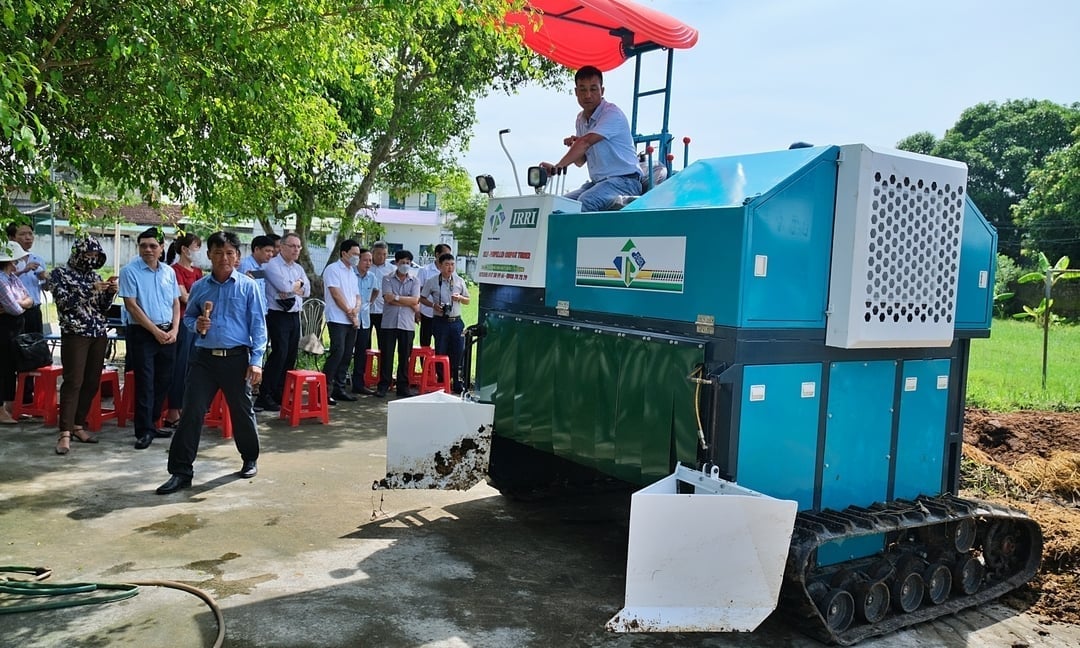
Straw mixer sponsored by IRRI in Ninh Binh. Photo: Bao Thang.
According to the Department of Crop Production and Plant Protection, if 50% of agricultural by-products are effectively treated and reused, Vietnam can reduce about 40 million tons of CO₂ per year. This is one of the important measures to implement the Net Zero 2050 commitment. The Ministry of Agriculture and Environment has included circular agriculture in its green growth strategy with the goal that by 2030, at least 30% of agricultural by-products will be collected and recycled, of which 20% will be used as organic fertilizer and 10% will be used as biofuel.
In fact, many localities have proven that it is feasible. In Dong Nai, Vinamilk and TH True Milk dairy farms apply the model of “from pasture to glass of milk”. Grass is grown with organic fertilizer from cow waste, liquid waste is processed into biogas, the remaining residue is used as fertilizer for plants. This model helps save 25% of input costs, while reducing methane emissions.
In Bac Ninh, many cooperatives have taken advantage of livestock by-products to combine with fruit growing, forming a “3F circular” chain (Feed - Farm - Fruit). In An Giang and Tay Ninh, the program “No straw burning – keep the air clean” has received strong support from people when they realized that burning straw is both wasteful and causes dust to suffocate them.
More important than the numbers is the change in mindset. Farmers now no longer see by-products as waste but as an extension of the crop. When straw is collected to produce fertilizer, people say “the field lives another cycle”. When coffee husks and sugarcane bagasse become industrial raw materials, people say “the soil has learned to regenerate”. In each of these closed processes, there is not only economics but also the ethics of farming - giving back to the soil what we take away.
To accelerate this process, research institutes are developing rapid composting, microbial fermentation and biofertilizer production technologies from by-products. The Institute for Agricultural Environment is collaborating with JICA and FAO to test the process of producing biochar from rice straw, which helps increase the soil’s ability to retain moisture and absorb nutrients. The Ministry of Agriculture and Environment is also encouraging the formation of “agricultural by-product processing centers” in each specialized area, where businesses, cooperatives and farmers participate. The goal is not only to reduce emissions but also to create new industries and new jobs in rural areas.
Challenges remain, especially in the collection and investment of processing infrastructure. Crop by-products are often scattered, large in volume but low in value, and difficult to transport over long distances. There is a need for mechanisms to encourage carbon credits, tax incentives for biomass processing enterprises and technical guidance for farmers. Initial successes show that this direction is very promising.
From fields to factories, from straw to bio-pellets, the journey of turning by-products into resources continues to write the story of sustainable agriculture in Vietnam. It is also the way people change their relationship with nature, respect, regenerate and coexist. After 80 years, the cultivation and plant protection industry not only knows how to create wealth but also knows how to preserve the health of soil, plants and the environment.
Source: https://nongnghiepmoitruong.vn/bien-phu-pham-thanh-tai-nguyen-hanh-trinh-xanh-cua-nong-nghiep-d783356.html








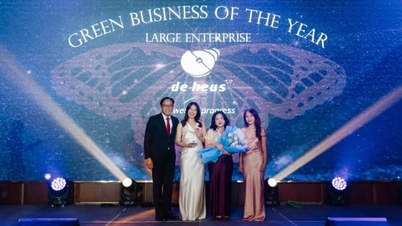

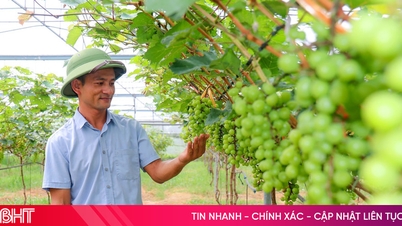

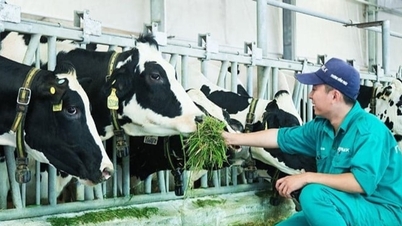



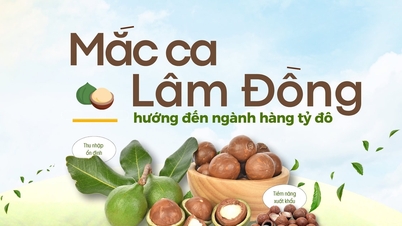


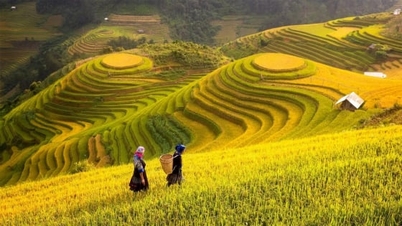


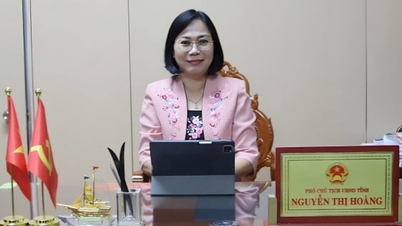
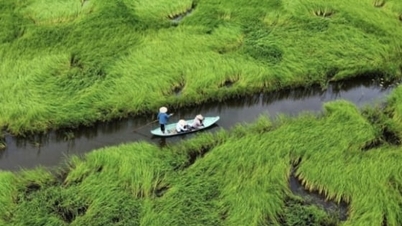








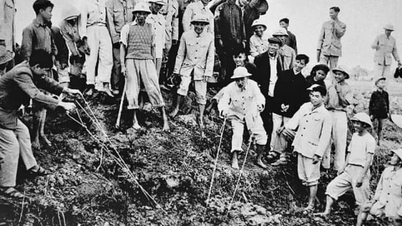












































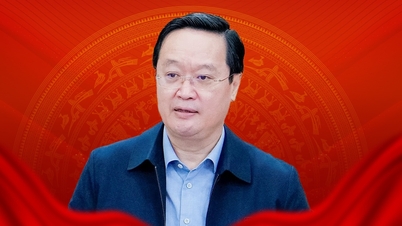


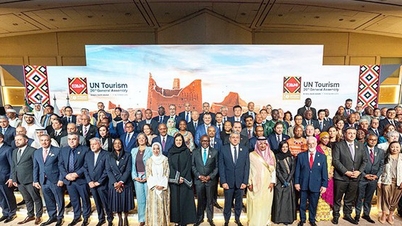









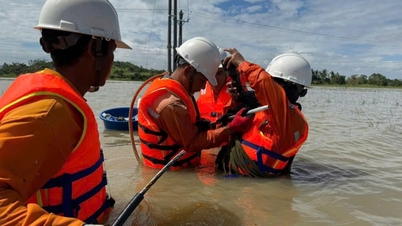
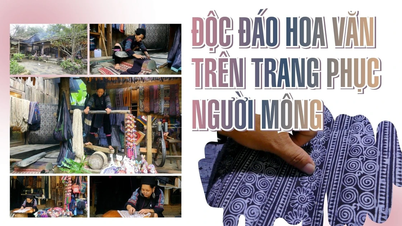

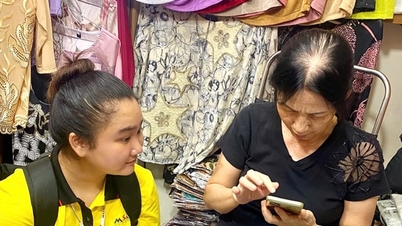


![Dong Nai OCOP transition: [Article 3] Linking tourism with OCOP product consumption](https://vphoto.vietnam.vn/thumb/402x226/vietnam/resource/IMAGE/2025/11/10/1762739199309_1324-2740-7_n-162543_981.jpeg)












Comment (0)